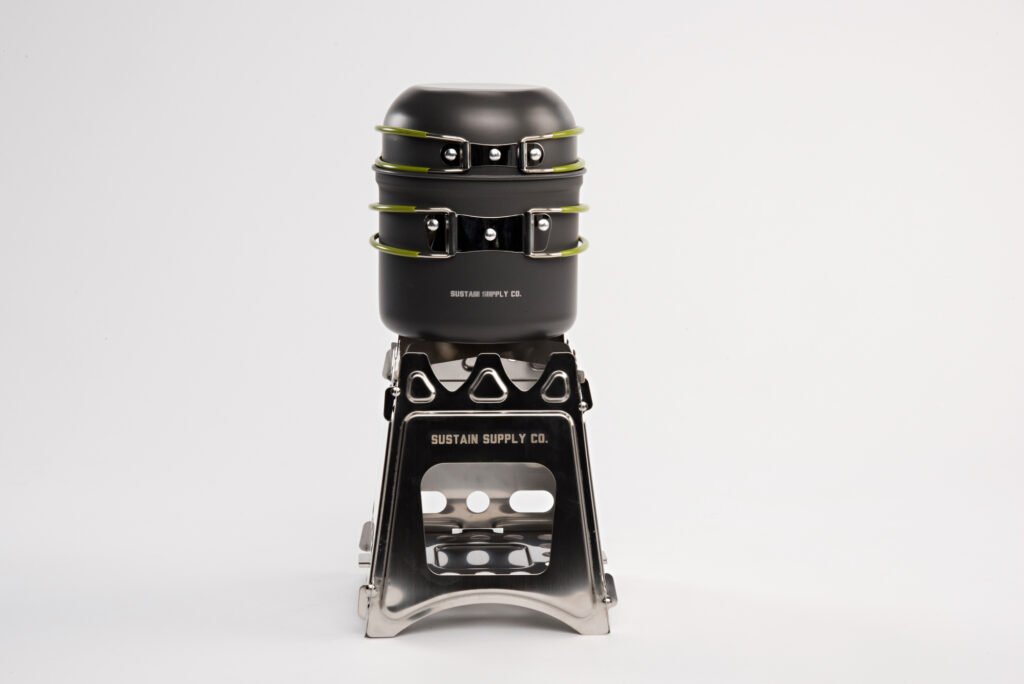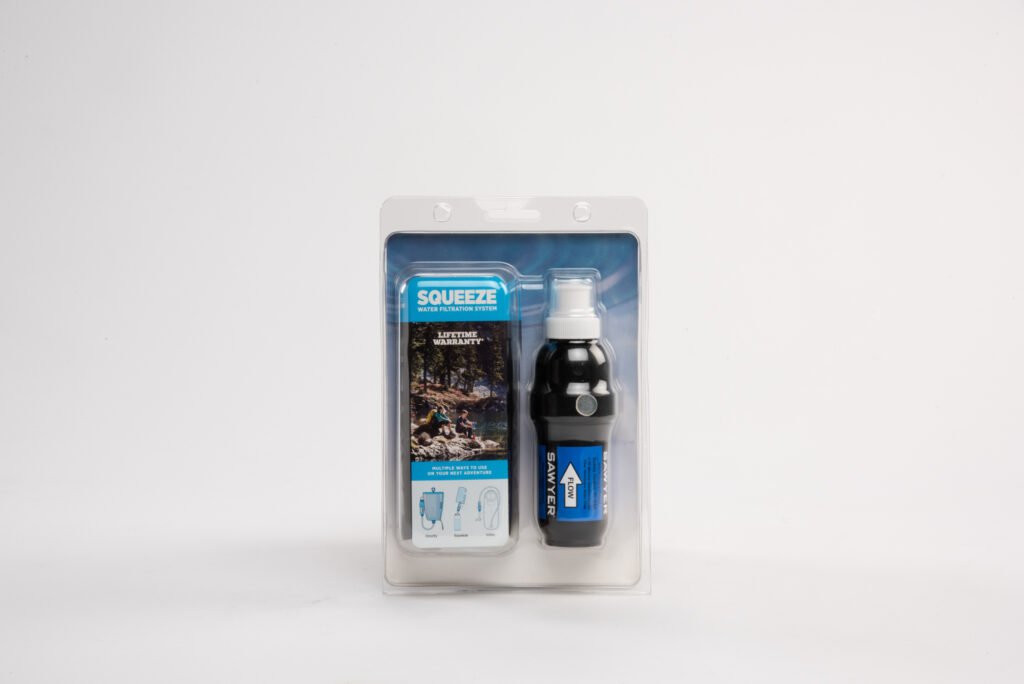Are you prepared to face a hurricane? It’s not a pleasant thought, but being prepared can make all the difference in the world. In this article, we’ll discuss the importance of building a hurricane preparedness kit and what items you should include.
Building a hurricane preparedness kit is essential to survive the first 72 hours after a storm. This is crucial because it can take time for emergency services to reach affected areas. It is recommended to create a kit that can accommodate enough supplies for two to four people. In addition to non-perishable food and water, your kit should also include a water filtration system, a portable stove, utensils, and light sources. These items will ensure that you have access to clean drinking water and a way to cook food. Don’t forget emergency blankets, a well-built knife, a ferrocerium rod and tinder for starting fires, a battery-operated or hand crank radio to stay informed, and a first aid kit for any injuries that may occur. It’s also a good idea to have a whistle for signaling for help, bath wipes for hygiene, and a spare cell phone charger to stay connected.
But that’s not all! There are additional items that you should consider adding to your kit. Essential documents such as identification, insurance policies, and medical records are crucial to have on hand. A 7-day supply of prescription medicine is also important in case access to pharmacies is limited. Cash is also recommended in case ATMs or credit card machines are down. Don’t forget about your furry friends – include extra pet supplies such as food and water for them. Other items to consider are a camera to document any damage for insurance purposes, an extra set of house and car keys, a hand crank radio for backup, a cell phone charger, and a local map in case you need to navigate through unfamiliar areas. And before a hurricane arrives, make sure your gas tank is full – you never know if fuel will be readily available after the storm. Remember, being prepared is key, and there are many resources available to help you, such as the National Hurricane Center, Ready.gov, the National Weather Service, the Federal Emergency Management Agency, and the American Red Cross. Stay safe!

Building a Hurricane Preparedness Kit: Survive the First 72 Hours After a Storm
Building a hurricane preparedness kit is essential to survive the first 72 hours after a storm. During this critical time, access to basic necessities can be severely limited, making it crucial to have supplies on hand to sustain yourself and your family. In this article, we will discuss the importance of building a hurricane preparedness kit, the recommended supplies to include, tips for evacuation and finding emergency shelters, additional items to consider, and useful resources for hurricane preparedness.
Importance of Building a Hurricane Preparedness Kit
When a hurricane strikes, it can cause widespread devastation and disrupt essential services such as electricity, water, and communication. Building a hurricane preparedness kit ensures that you have the necessary supplies to sustain yourself and your loved ones during this challenging period. Having a well-stocked kit can provide you with peace of mind and relieve some of the stress that comes with the uncertainty of post-storm conditions.
Recommended Supplies for the Kit
To create a comprehensive hurricane preparedness kit, it is recommended to include the following supplies:
Non-Perishable Food
Stock up on non-perishable food items such as canned goods, granola bars, peanut butter, and dried fruits. Ensure that you have enough food to sustain your family for at least three days. Consider any dietary restrictions and preferences when selecting food items.
Water and Water Filtration System
Store an adequate supply of water for drinking and sanitation. The general guideline is to have at least one gallon of water per person per day for a minimum of three days. Additionally, consider including a water filtration system or water purification tablets to safely filter any additional water sources.
Portable Stove and Utensils
A portable stove can be a lifesaver when electricity is unavailable. Opt for a camping stove that uses propane or butane fuel. Also, include essential cooking utensils such as a pot, frying pan, and utensils.
Light Sources
Ensure that you have reliable light sources such as flashlights, lanterns, and headlamps. Include extra batteries to power these devices during prolonged outages.
Emergency Blankets
Emergency blankets provide insulation and can help keep you warm during cold nights. These lightweight and compact blankets are an essential addition to your kit.
Well-Built Knife
A well-built knife is a versatile tool that can come in handy during emergencies. Choose a durable and multi-purpose knife that can be used for various tasks, such as cutting ropes, opening cans, or preparing food.
Ferrocerium Rod and Tinder
A ferrocerium rod and tinder are essential for starting fires. These items can be incredibly useful for cooking, providing warmth, and signaling for help.
Battery-Operated or Hand Crank Radio
A battery-operated or hand crank radio will allow you to stay informed about the latest news and updates during and after the storm. Tune in to local emergency channels for critical information.
First Aid Kit
Include a well-equipped first aid kit that includes essential medical supplies, such as bandages, antiseptic wipes, pain relievers, and any necessary prescription medications.
Whistle
A whistle is a simple yet effective tool for attracting attention and signaling for help. Keep one in your kit to use in case of emergencies.
Bath Wipes
Bath wipes are an excellent alternative when access to showers or running water is limited. They can help you stay clean and hygienic during the first few days after the storm.
Spare Cell Phone Charger
A spare cell phone charger or a portable power bank will ensure that you can keep your devices charged and stay connected with loved ones and emergency services.
Evacuation and Emergency Shelters
In some cases, evacuation may be necessary for your safety. It is crucial to determine if you live in an evacuation area and familiarize yourself with the evacuation routes. Stay updated with the latest information and follow the instructions of local authorities.
Knowing the location of the nearest emergency shelters is vital when evacuation is necessary. Research and make a note of the closest shelters in your area. Familiarize yourself with their procedures and prepare to bring your hurricane preparedness kit with you.
Additional Items for the Kit
In addition to the essential items mentioned earlier, consider including the following in your hurricane preparedness kit:
Essential Documents
Make copies of important documents such as identification cards, passports, insurance policies, and medical records. Store them in a waterproof and portable container.
7-Day Supply of Prescription Medicine
If you or anyone in your family requires prescription medication, ensure that you have enough to last for at least seven days. Consult with your healthcare provider and make arrangements to obtain an extended supply if needed.
Cash
ATMs and electronic payment systems may be unreliable during and after a hurricane. Keep a supply of cash on hand to cover any immediate needs or unexpected expenses.
Baby Food and Diapers
If you have infants or young children, stock up on an adequate supply of baby food, formula, diapers, and other necessary items.
Pet Supplies
If you have pets, remember to include their food, medication, leash, collar, and any other supplies they may need in your hurricane preparedness kit.
Camera
Having a camera can be helpful for documenting any damage to your property for insurance purposes. It can also serve as a way to capture important memories or send visual updates to loved ones.
Extra Set of House and Car Keys
Keep an extra set of keys for your house and vehicle in a secure location within your hurricane preparedness kit. This will ensure that you have a backup in case your original set is lost or damaged.
Hand Crank Radio
In addition to a battery-operated radio, consider including a hand crank radio in your kit. This device allows you to generate power by manually turning a crank, ensuring a reliable source of information even if batteries are depleted.
Cell Phone Charger
In today’s digital age, keeping your cell phone charged is crucial for communication. Include a cell phone charger compatible with your device in your hurricane preparedness kit.
Local Map
In case of evacuation or navigating unfamiliar territory, a physical map of your local area can be a valuable resource. Familiarize yourself with alternative routes and key landmarks in advance.
Preparing Your Vehicle
In addition to building a hurricane preparedness kit for your home, it’s important to prepare your vehicle as well. Consider the following steps:
Fill Your Gas Tank
Before a hurricane arrives, fill your vehicle’s gas tank. Gas stations may be closed or out of service during and after a storm, so having a full tank will allow you to travel if necessary.
Check Your Vehicle’s Condition
Inspect your vehicle for any issues that may need attention. Ensure that tires are properly inflated, wipers are functioning correctly, and all essential fluids are topped up. Being prepared will help minimize the risk of breakdowns during adverse weather conditions.
Resources for Hurricane Preparedness
To stay informed and prepared for hurricanes, utilize the following resources:
National Hurricane Center
The National Hurricane Center provides in-depth information on current tropical weather conditions and forecasts. Visit their website at www.nhc.noaa.gov for the latest updates.
Ready.gov
Ready.gov is a comprehensive resource provided by the Department of Homeland Security. It offers valuable information and tips on how to prepare for various emergencies, including hurricanes.
National Weather Service
The National Weather Service (NWS) provides accurate weather forecasts, warnings, and advisories. Visit their website at www.weather.gov for localized weather information.
Federal Emergency Management Agency
The Federal Emergency Management Agency (FEMA) offers guidance on how to prepare for and respond to emergencies. Their website, www.fema.gov, provides resources and tools for hurricane preparedness.
American Red Cross
The American Red Cross provides valuable resources and assistance during emergencies, including hurricanes. Visit their website at www.redcross.org for information on disaster preparedness and response.
Conclusion
Building a hurricane preparedness kit is crucial for surviving the first 72 hours after a storm. By including essential supplies such as non-perishable food, water, light sources, and first aid kits, you can ensure the well-being of yourself and your loved ones. Additionally, considering factors such as evacuation routes, emergency shelters, and additional items like essential documents and pet supplies will enhance your preparedness level.
Remember to prepare your vehicle and stay informed with updates from reliable sources such as the National Hurricane Center, Ready.gov, the National Weather Service, FEMA, and the American Red Cross. By being proactive and having a well-thought-out hurricane preparedness plan, you can face the challenges brought by a hurricane with confidence and increase your chances of staying safe.

